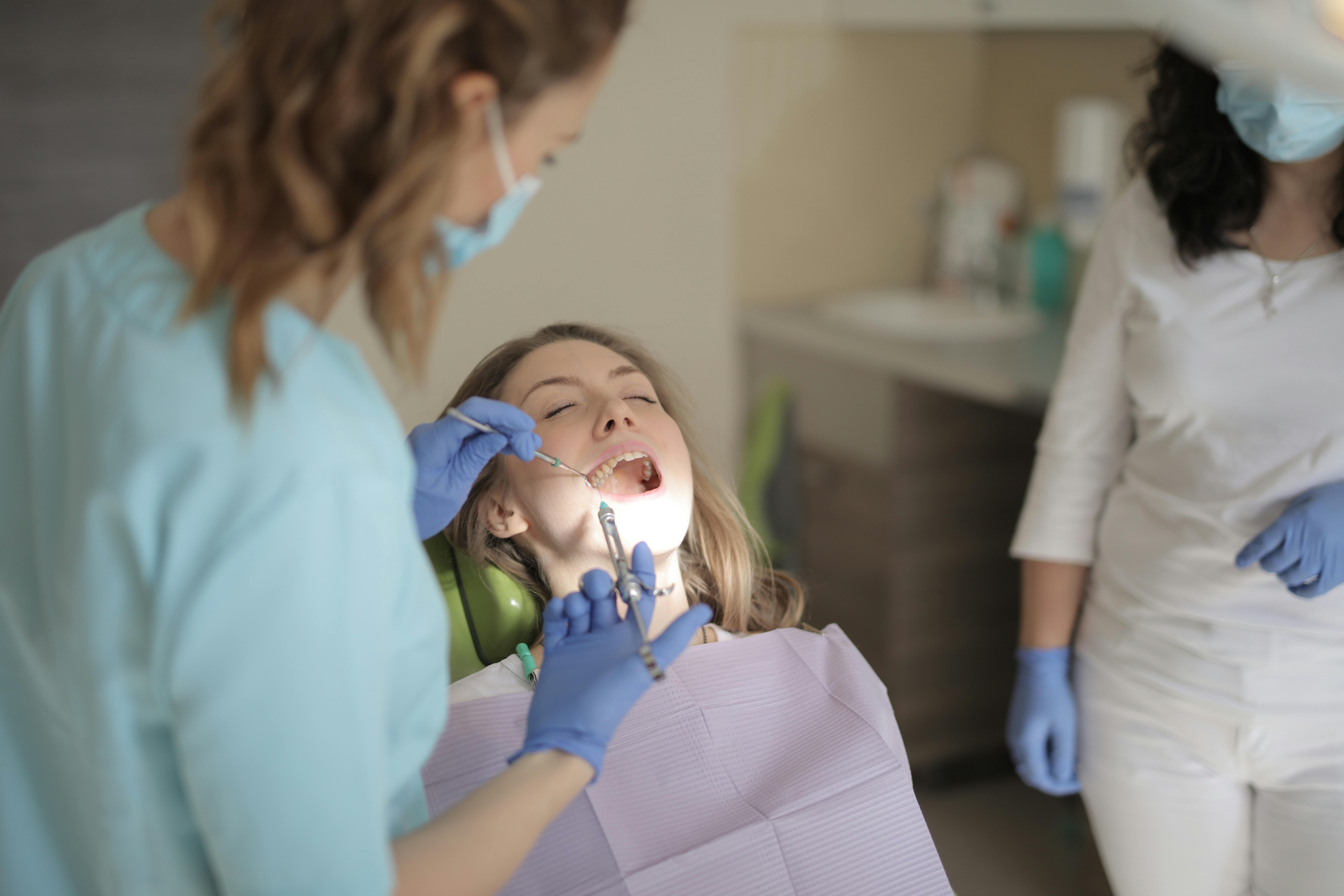Mouthguards are becoming increasingly popular as a way to help straighten teeth. They provide a number of benefits, including preventing tooth and gum damage, improving your bite alignment, and helping with teeth straightening. In this article, we will discuss how mouthguards can help straighten teeth and the advantages of wearing one.A mouthguard is a protective device for the mouth that covers the teeth and gums to prevent and reduce injury to the teeth, arches, lips and gums. It is most often used to prevent injuries in contact sports, but can also be worn at night to prevent teeth grinding. Mouthguards come in three basic types: ready-made, boil-and-bite and custom-made.
Custom-made Mouthguards
Custom-made mouthguards are designed and fitted by a dentist or orthodontist for individual patients. The process involves taking an impression of the patient’s teeth and forming a mold of the mouth. The dentist or orthodontist then creates the mouthguard using the mold. Custom-made mouthguards offer superior protection and fit as they are designed to fit perfectly for each individual patient. This type of mouthguard is usually more expensive than other types but can be worth the extra cost if it provides better protection and comfort.
Boil-and-Bite Mouthguards
Boil-and-bite mouthguards are bought from most pharmacies and sporting goods stores. They can also be ordered online. This type of mouthguard is made from thermoplastic material that becomes soft when heated in boiling water. The patient then bites into the softened material, allowing it to form around their teeth and provide a snug fit when cooled.
Stock Mouthguards
Stock mouthguards come preformed in a variety of sizes and shapes, making them easy to find in stores or online. They are often less expensive than custom-made or boil-and-bite mouthguards but they typically don’t offer as good of a fit or protection since they are not designed specifically for an individual’s teeth.
Occlusal Splints
Occlusal splints are similar to custom-made mouthguards but they are used primarily for therapeutic purposes rather than protection. Occlusal splints can help reduce jaw pain, headaches, clenching, and grinding by helping to keep the jaws correctly aligned while sleeping or during sports activities. They can also be used to treat TMJ disorders, sleep apnea, and bruxism (teeth grinding).
Benefits of Wearing a Mouthguard
Mouthguards are an important piece of protective equipment for athletes, especially those involved in contact sports. Wearing a mouthguard during physical activity helps protect the mouth and teeth from injury. It can also help to reduce the severity of any injuries that occur. There are several other benefits to wearing a mouthguard, including improved performance, comfort and protection from damage to the soft tissues of the mouth.
One of the biggest benefits of wearing a mouthguard is increased performance. It can help to improve breathing by keeping the jaw in an open position and allowing for more oxygen intake. This can help athletes stay alert and perform at their best during physical activity. Mouthguards also provide comfort by cushioning the teeth and preventing chafing or irritation from hard surfaces such as hockey sticks or football helmets.
Another benefit of wearing a mouthguard is that it helps to protect against dental injuries such as chipped or broken teeth, fractured jaws and soft tissue lacerations. It can also help prevent concussions by absorbing some of the impact when blows to the head occur. Wearing a properly fitted mouthguard can also help reduce the severity of many facial injuries that may occur during contact sports, such as lacerations, bruises and cuts on the lips or cheeks.
Overall, wearing a properly fitted mouthguard offers numerous benefits for athletes who participate in contact sports or other activities that involve physical contact. Not only does it provide protection from dental injuries but it also helps improve performance, provides comfort and reduces the severity of facial injuries that may occur during play.
Does Wearing a Mouthguard Help Straighten Teeth?
Mouthguards are protective appliances worn to protect the teeth and gums from trauma. They are often used in contact sports such as football, hockey, rugby, and basketball. While mouthguards do not directly help straighten teeth, they serve an important role in protecting the teeth from damage while playing sports. Wearing a mouthguard can also help protect against grinding or clenching of the teeth, which can cause damage to the enamel of the teeth.
When it comes to straightening teeth, there are other options available that may be more effective than wearing a mouthguard. Orthodontic treatments such as braces or aligners can be used to help correct malocclusions or misalignments of the teeth. These treatments use brackets and wires to gradually move the teeth into their correct positions over time. The process can take several months or longer depending on the severity of the misalignment.
Invisalign is another option for straightening teeth that does not involve any brackets or wires like traditional braces do. Invisalign uses clear plastic aligners that are worn over the teeth and gradually move them into their correct positions over time. This treatment is typically faster than traditional braces and does not require regular visits to an orthodontist for adjustments.
No matter what method you choose for straightening your teeth, it is important to protect them from any trauma while you undergo treatment with a mouthguard. Using a mouthguard during contact sports will help protect your teeth from any potential injury while still allowing you to enjoy your favorite activities without worry!
Advantages of Using a Mouthguard for Orthodontics
Using a mouthguard for orthodontic treatment has many advantages. It can help protect your teeth from further damage, reduce the risk of injury to the teeth and jaw, and help maintain the proper alignment of your orthodontic braces. A mouthguard also helps reduce the discomfort associated with orthodontic treatment, as it can help reduce pressure on sensitive areas of your mouth. Additionally, a mouthguard can provide an extra layer of protection against bacteria and other irritants that may enter your mouth during treatment. By wearing a mouthguard during orthodontic treatment, you can ensure that your teeth remain healthy and well-aligned throughout the process.
Another advantage of using a mouthguard for orthodontic treatment is that it can make it easier to clean and care for your braces. A mouthguard can provide an additional layer of protection between your braces and the food you consume, which can help prevent food particles from getting stuck in or around your braces. Additionally, a mouthguard helps to prevent saliva and other fluids from entering into contact with your braces, which can reduce staining or discoloration. By protecting your braces from these substances, you can help ensure that they remain looking their best throughout the course of treatment.
Finally, using a mouthguard for orthodontic treatment can also provide additional comfort while wearing braces. The additional layers of protection provided by a mouthguard reduce friction between the metal brackets and wires on your braces and the inside of your cheeks or lips while eating or talking. This reduced friction helps to prevent discomfort caused by soreness in these areas when wearing braces. Additionally, using a custom-fitted mouthguard provides an extra layer of support to keep your teeth in place while adjusting to new alignments during treatment.

Advantages of Using a Mouthguard for Orthodontics
Mouthguards can provide a variety of benefits when used in conjunction with orthodontic treatment. One advantage is that they can help to prevent damage to the teeth and gums during orthodontic treatment. Mouthguards can also help to reduce the amount of discomfort experienced during orthodontic treatment, as they provide cushioning between the teeth and the brackets or wires that are being used. Additionally, mouthguards can help to reduce the amount of time spent in the orthodontist’s office for adjustments, as they protect the braces from being damaged by eating or drinking certain foods. Finally, mouthguards may also help to improve the overall appearance of a patient’s smile once their treatment is completed.
Disadvantages of Using a Mouthguard for Orthodontics
Although mouthguards may offer some advantages when used in combination with orthodontic treatments, there are also some potential disadvantages associated with their use. For example, some people find it difficult to get used to wearing a mouthguard and may experience difficulty speaking or breathing when one is worn. Additionally, wearing a mouthguard may cause saliva and food particles to become trapped between the guard and the teeth, leading to increased risk of dental decay. Finally, mouthguards can be expensive and may need to be replaced regularly as they wear out over time.
Cost of Using a Mouthguard to Straighten Teeth
The cost of using a mouthguard to straighten teeth can vary depending on the type of braces you need and the complexity of your case. Some people may only need a simple mouthguard, while others may need more complex braces. The average cost for using a mouthguard to straighten teeth can range from $1,500 to $4,000. This cost also depends on the length of treatment, which can take anywhere from six months to two years. In addition, you may be required to have regular follow-up appointments with your orthodontist, which could add additional costs.
In some cases, insurance may cover part or all of the cost for using a mouthguard to straighten teeth. It is important to check with your insurance provider to see what type of coverage they offer for orthodontic treatment. Some providers may cover part or all of the cost if the procedure is deemed medically necessary by your doctor or dentist. Additionally, there are some financing options available that allow you to pay for the treatment in monthly installments.
The cost for using a mouthguard to straighten teeth can be expensive but it can be worth it in the end when you achieve a beautiful smile. Your orthodontist will be able to provide more information about the costs associated with your particular case and discuss payment options with you as well.
Alternatives to Using a Mouthguard to Straighten Teeth
Braces are the traditional method of straightening teeth, but there are other alternatives that can help improve the alignment of teeth. Invisalign is one such alternative that uses clear plastic aligners instead of brackets and wires to move the teeth into proper position. The aligners are custom-made for each patient and are removable, allowing you to eat, drink, and brush your teeth as usual. Another option is lingual braces, which work like traditional braces but are placed on the backs of the teeth so they are hidden from view. Finally, clear retainers can be used to hold a previously straightened smile in place over time. These retainers can be worn at night or all day depending on the patient’s needs.
While these alternatives may be more expensive than traditional braces or mouthguards, they offer greater comfort and convenience for those looking for an easier way to straighten their teeth. In addition, since these methods involve gradual changes to the teeth rather than a single adjustment like with a mouthguard, they may be better suited for more complex cases where multiple corrections need to be made.

Conclusion
Mouthguards are an effective tool to help straighten teeth, especially when used alongside other orthodontic treatments. Mouthguards can also be used to reduce the risk of injury when playing sports and can help to reduce nighttime tooth grinding. However, if you are looking for a more permanent solution to straighten your teeth, it is best to speak to a qualified orthodontist. They will be able to provide you with the best advice and treatment plan for your individual needs.
Mouthguards can be beneficial in some cases but should not be relied upon as a sole solution for straightening teeth. In order to achieve the best possible results, it is important that mouthguards are used alongside other orthodontic treatments and that regular check-ups with a qualified orthodontist are undertaken. With this combined approach, you will be able to achieve straighter teeth in the most efficient and comfortable way possible.
